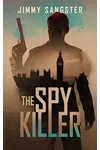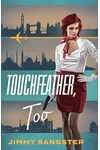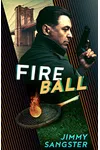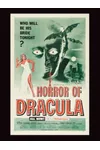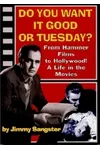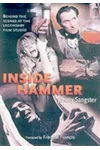Picture a Welsh storyteller who conjured blood-curdling chills and gothic thrills—meet Jimmy Sangster! Born in 1927, this screenwriter, director, and novelist redefined horror with his iconic scripts for Hammer Films, like *The Curse of Frankenstein* and *Dracula*. With a knack for blending gore, wit, and suspense, Sangster’s work turned low-budget frights into cult classics that still haunt us today.
From a clapper-boy at 16 to a horror legend, Sangster’s journey was as twisty as his plots. His scripts launched Hammer’s golden era, and his novels kept readers guessing. Let’s dive into the life and legacy of this master of macabre!
The Making of Jimmy Sangster
James Henry Kinmel Sangster was born on December 2, 1927, in Kinmel Bay, North Wales, named after the town by his estate-agent father. Educated at Ewell Castle School and Llandaff Cathedral School, he ditched academics at 16 to chase films. Starting as a clapper-boy during World War II, he hustled through roles like gofer and projectionist before joining Ealing Studios post-RAF service. In 1949, he landed at Exclusive Studios (later Hammer), where he climbed from production assistant to assistant director, setting the stage for his horror revolution.
His big break came when Hammer, riding high on *The Quatermass Xperiment*, tapped him to write *X the Unknown* in 1956. Despite protesting, “I’m not a writer,” Sangster’s script about a radioactive blob hooked audiences, proving he could spin terror from thin air.
Jimmy Sangster’s Unforgettable Stories
Sangster’s scripts for Hammer Films were game-changers. *The Curse of Frankenstein* (1957) reimagined the Baron as a ruthless yet charming dandy, played by Peter Cushing, with Christopher Lee as the monstrous creation. Its grisly, colorful gore shocked critics but thrilled audiences. *Dracula* (1958), retitled *Horror of Dracula* in the U.S., followed, with Lee’s seductive Count and Cushing’s Van Helsing cementing Hammer’s gothic style. Sangster’s knack for fresh characters and twisty plots made these films iconic.
He also penned *The Mummy* (1959), blending ancient curses with Hammer’s signature flair, and *Taste of Fear* (1961), a psychological thriller that showcased his love for suspense over gore. As a director, Sangster helmed *The Horror of Frankenstein* and *Lust for a Vampire* (both 1970), though these were less successful. His novels, like *Private I* and *Touchfeather*, mixed spy thrills with dark humor, revealing his versatile storytelling. Sangster’s style—taut dialogue, black humor, and vivid horror—kept fans hooked across mediums.
Later, he wrote for American TV, including *Kolchak: The Night Stalker* and *Wonder Woman*, and penned a screenwriting guide, *Screenwriting: Techniques for Success*. His 1997 memoir, *Do You Want It Good or Tuesday?*, dished on his Hammer days with self-effacing charm.
Why Jimmy Sangster Matters
Sangster’s scripts didn’t just scare—they reshaped horror. His work brought physicality, sexuality, and style to a genre stuck on lumpy monsters, making Hammer a global name. Films like *Dracula* turned Christopher Lee into a sex symbol and horror icon, while Sangster’s psychological thrillers influenced modern suspense. His low-budget ingenuity proved you don’t need big bucks for big scares, inspiring filmmakers worldwide.
Today, Sangster’s films are cult classics, celebrated for their bold energy. His novels, republished by Brash Books, keep his sly wit alive. From Hammer’s foggy sets to Hollywood’s TV studios, Sangster’s legacy is a testament to storytelling that grips and grins.
- Born: December 2, 1927, Kinmel Bay, Wales
- Key Works: *The Curse of Frankenstein*, *Dracula*, *The Mummy*, *Private I*
- Died: August 19, 2011, London, England
Snag *The Curse of Frankenstein* or *Private I* and dive into Jimmy Sangster’s thrilling world of horror and mystery!
